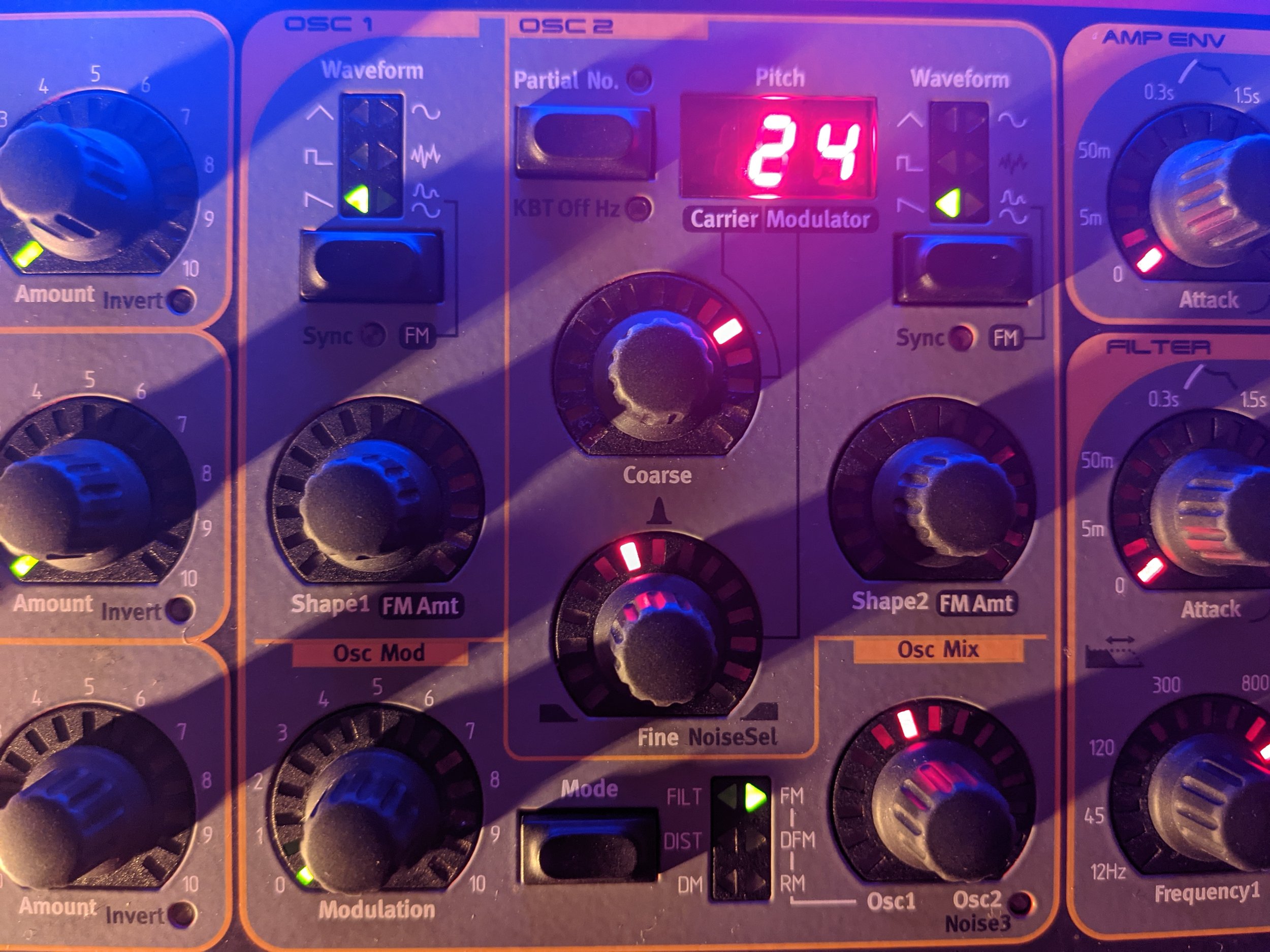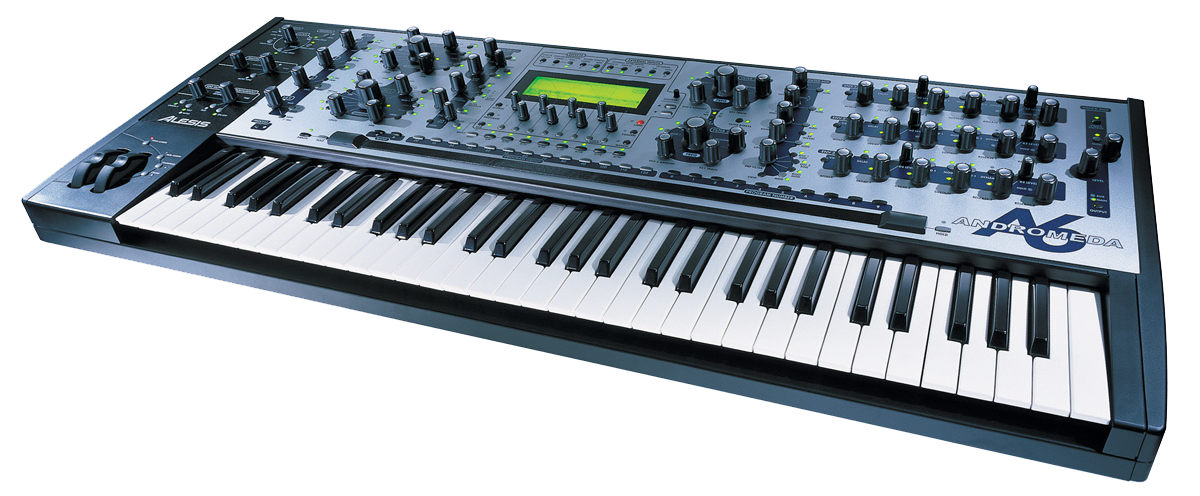Clavia Nord Lead 2X Review 2024
Bright. Sharp. Aggressive. Cold. Common comments made about the Nord Lead 2X, the successor to the famous Nord Lead 2 that came out in 1997. The 2X came out in 2003, and improved on the original with expanded polyphony, more user memory, and upgraded 96 kHz 24-bit DACs. Some users complained that it sounded a bit too ‘clean’ compared to the 2 and the 1, and that it sounds dated compared to more modern synths.
But with analog and VA synths becoming trendy again, and music reverting to the 90s in style and mood, it seems like the Nord Lead 2X may be swept up in the revival.
So is it still worthit in 2024? Let’s find out.
OSCILLATORS
At first, the 2X looks simple and straightforward enough. Conventional analog waveforms like the Triangle, Sawtooth, and Pulse come standard on both Oscs, but Oscillator 1 also includes a Sine wave, and Osc 2 has Noise available, whose color can be brightened or dulled by turning the Semitones knob.
The Pulse Width can also be modulated, but unlike on the Nord Lead 3, or most other analog-modeling synths, the Pulse Width is a Master control, so turning the knob or linking PW to an LFO or the Modulation section affects the Pulse Width for pulse waves on both oscillators at the same time and the same way. There is no Pulse Width variability per oscillator to add complexity, which can be a little frustrating if you want to create more complex pulse-based tones.
However, one area the 2X shines is in the FM capabilities. By jumping between oscillators, and playing with semitones and adjusting the FM, you can create some convincing-sounding DX-like tones on it, and I even managed to recreate some classic DX7 slap bass style sounds on it fairly easily.
The Sync and Ring Mod behave more or less like normal for any synth, and I personally have very little use for them, since they don’t factor into genres of music I write.
Now the big question you’re all wondering is, “How does it sound?” And the answer is:
Excellent.
The saws and pulses are bright, pop, and full of harmonics that become fizzier higher up the keyboard you go, so midrange basses, plucks, and bright detuned leads have a very pleasing musical quality to them that cuts through a mix without being too in-your-face, and the sines and triangles are also good and clean, and lend themselves well to all manner of crazy FM tones.
The Fine Tune detuning between Osc 1 and 2 has a somewhat odd and uneven curve to it, as it seems to detune more rapidly and aggressively turned clockwise, and less aggressive detuned counter-clockwise. It can be helpful when trying to make 80s leads that are detuned by small increments, but it takes a little getting used to.
Some folks complain that the synth doesn’t sound “fat” enough on its own. And compared to a Moog, it doesn’t. But for a modern dance mix, that lack of heavy fatness is a blessing in disguise, as it requires little to no processing to sit cleanly in a mix. These oscillators are definitely the big strong point of this synth.
FILTERS
Now on to one of the other big critical elements of the 2X. The filter. It’s an analog-modeling subtractive synth. Does it sound analog?
The answer there, is yes, and no.
It’s not analog in the same way the Moog ladder filter is analog, in its sound. The tightness of the envelopes and the overall tone and behavior of the filter feels more in line with the Prophet Rev2, and so like the Rev2, it’s great for plucks and super snappy sounds. But juicy round 80s and funk basses can be accomplished on it with minimal effort. But it isn’t the same super round, mildly saturated filter tone that a Slim Phatty puts out. And the Resonance doesn’t quite hit as nicely on the 2X as it does on the Moog. Again, it’s more like the Rev2 in that arena.
The different filter modes are also quite nice, and the different Lopass modes are musical and pleasing, and the Hipass, Bandpass, and Notch+LP are fun and offer useful sound-sculpting capabilities.
What IS extra nice, is that it has not only a Velocity on/off button (a control knob for variable velocity mod amount would have been nice, but it’s fine as it is), and multi-level Keyboard Tracking for the filter. So for melodic toplines, midrange basslines, and arpeggios, you can really add some energy and life to your riffs with the push of a button.
The filter does have its own character that sets it apart from other VAs like the JP8000, and so it lends well to making plucks, plucky basses, and short sounds with low cutoffs that the JP can’t manage due to the filter snap baked into the sound of the JPs. For trance plucks and basses, the 2X is pretty hard to beat
AMPLITUDE
Not really too much to say here. Standard ADSR envelope and Gain to be found here. Same nice and tight behavior as with the filter.
LFO
Fairly standard LFOs to be found here, although I must confess, having used the Blofeld, TI2, and Mininova, the LFO routing options and waveform choices on the 2X feel really restricted. convincing Dubstep and DnB wobbles are a challenge with these since they don’t have a Sine waveform option, and the number of potential routings is pretty small. However, for more standard types of basic modulations, it’s adequate. The Nord Lead 3 definitely spoils you a lot more with options.
MODULATION
This is another somewhat weak point of the synth. The settings are fairly typical, and the same can be found on the NL3, and Slim Phatty, and so on. But the inability to link the Mod envelope to more than 3 sources, and the pitch only being for Osc 2, seems like an oversight. Being able to modulate the master pitch, or fade in the LFO amount or Rate would have been helpful. At least the Pulse Width can be modded using these parameters, so I can make some of my favorite types of pluck sounds with it.
EFFECTS
Like all the early Nord Lead keyboards, the only FX you ever get is Distortion. On the NL3, that came with an adjustable level, which you could pair with the Moog style filter for screaming acid sounds, On the 2X, it isn’t much more than a saturator that soft clips the sound and adds some gain. If you want really crunchy screaming distortion, you’re going to need to run this through external FX.
Having said that, once you run this synth through some reverb and delay, or phaser, it really starts to shine. Dry, it sounds a bit lifeless. but once you add in FX like you would use in a final track, the synth comes to life.
UNISON
And so we come to the Unison. One of the most famous and beloved features of the 2 and 2X. Activating it turns on 2 voices per key pressed, which if you use Poly mode and play chords, creates some nice fat sounds that have a very pleasant stereo spread. By digging into a Special submenu using the Shift key, you can change the Detune amount for the Unison, to create more extreme effects. Great for Trance and Psytrance pads, and wide, detuned leads.
CONCLUSION
So here at the end of all things, the question arises:
Is the Nord Lead 2X still worth the money? Is it worth getting? Will it still be useful in music today?
In this sound designer and musician’s opinion, yes.
While it lacks the fearsome modulation options of a TI2 or a Blofeld, and it can’t pull off huge SuperSaws like the JP8080, nor the super heavy tones of a Moog, the Nord Lead 2X still excels at bright, punchy, bold leads, plucks, and basses, that you can record dry, add whatever reverb or delay you need to for the sound, and minor subtractive EQing to balance it, and that’s it.
Its sound fits in any mix, and with careful adjustments to the Velocity and keyboard tracking, this synth will add rich musical depth to your song that many newer synths lack. What it’s missing in mod options, it makes up for with a characterful sound that can be as modern or retro as you like.
Modern Techno and Classic Trance producers in particular will find it useful for bright plucks, and bold punchy analog-style stab sounds - and tight rolling basses.
It’s definitely worthit and it has been a reliable stalwart in several of my most recent songs, and forms the foundation of their most engaging sounds. My 2X will accompany my JP and Virus with me to my grave.
You can also attain the same sound in VST format using the discoDSP Discovery VSTi
Hear it in action:



























